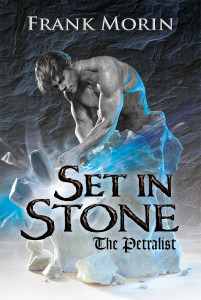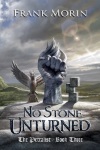Everyone’s heard it, especially if you have aspirations in a creative field. “Don’t quit your day job.” In November, right before Christmas, I discarded the age-old advice and I quit my day job. Am I crazy? Yes. Though I can’t recommend this for everyone, it fit for me. Why did I do it? Honestly, I’m not sure. It kind of just felt right.
A previous post talked about time and motivation; I felt I’d completely lost both. I was starting to hate my job and it’s incurable monotony. Between the job hours, appointments for myself and my kids, and a number of medical problems, I decided I’d rather be poor than dead. That may seem like an exaggeration, but I’d turned into an automaton. You all know the routine: get up, get kids to school, get to work, do boring job, come home, get kids (or yourself) to appointments/practices, don’t have time to make dinner, pick up fast food, collapse on couch, watch a show and look at emails, go to bed. And then start all over again.
Interesting thing, quitting the day job hasn’t actually given me more time to write. It’s about the same, but I actually use that time to write instead of staring comatose at a computer screen and it has given me more motivation in a number of areas of my life. I have to be very careful with the budget, but I like that. I don’t feel like I’m throwing my time at one wall so I can make money to throw at another. We eat more homemade meals and I’m able to get everyone in the family to participate in making them because I’m not running around like a chicken with its head cut off. I’m able to exercise, get everyone to their appointments, take care of my daughter in online school, and now I can help with my mother’s ever-increasing doctor’s appointments. Maybe I sound privileged. I like to think I’m blessed. My husband is able and willing to support me in my decision, and the family is adjusting to the new restraints on our budget.
The point is, if you want to be a creator in any field, find what works for you. Some people have to work and they make time for that creativity as an outlet. Some people enjoy their work and their creative endeavors are a much-needed balance to life. For some, focusing their energy, time, and making their creativity work as a career is the only way to go. For me, balancing my health, my family, my budget, and making time for my creative endeavors is the path I choose. It’s new, sometimes it’s painful, but I’m happy. And isn’t that the real point?
As a side note, I received an offer from Brick Cave Media to publish my novel, “Moon Shadows.” I signed the contract around the middle of December and just turned in the final edits. Maybe I wasn’t so crazy after all. Time will tell.
 Colette Black lives in the far outskirts of Phoenix, Arizona with her family, 2 dogs, a mischievous cat and the occasional unwanted scorpion. She loves learning new things, vacations, and the color purple. She writes New Adult and Young Adult sci-fi and fantasy novels with kick-butt characters, lots of action, and always a touch of romance. Find her at www.coletteblack.net
Colette Black lives in the far outskirts of Phoenix, Arizona with her family, 2 dogs, a mischievous cat and the occasional unwanted scorpion. She loves learning new things, vacations, and the color purple. She writes New Adult and Young Adult sci-fi and fantasy novels with kick-butt characters, lots of action, and always a touch of romance. Find her at www.coletteblack.net





